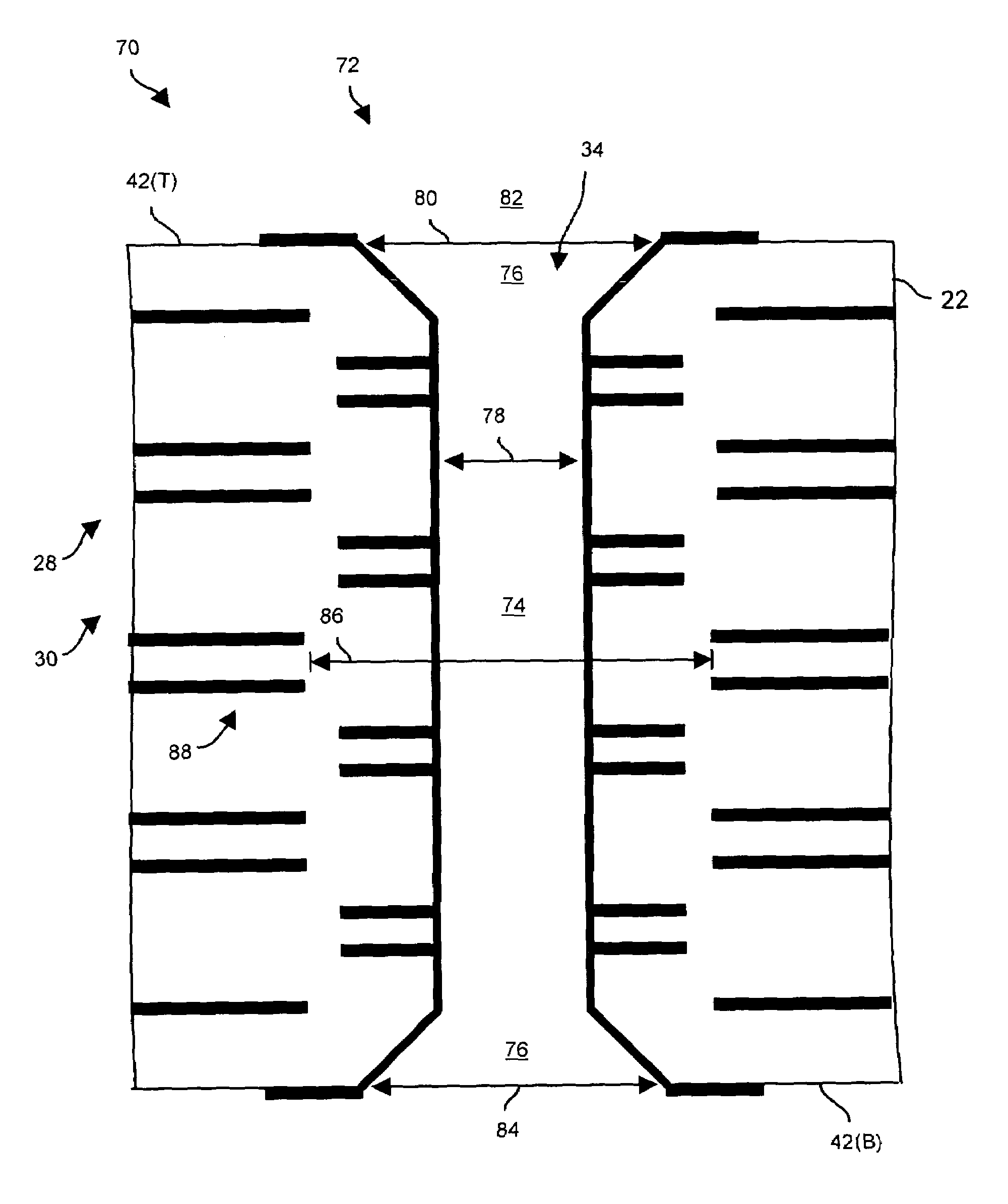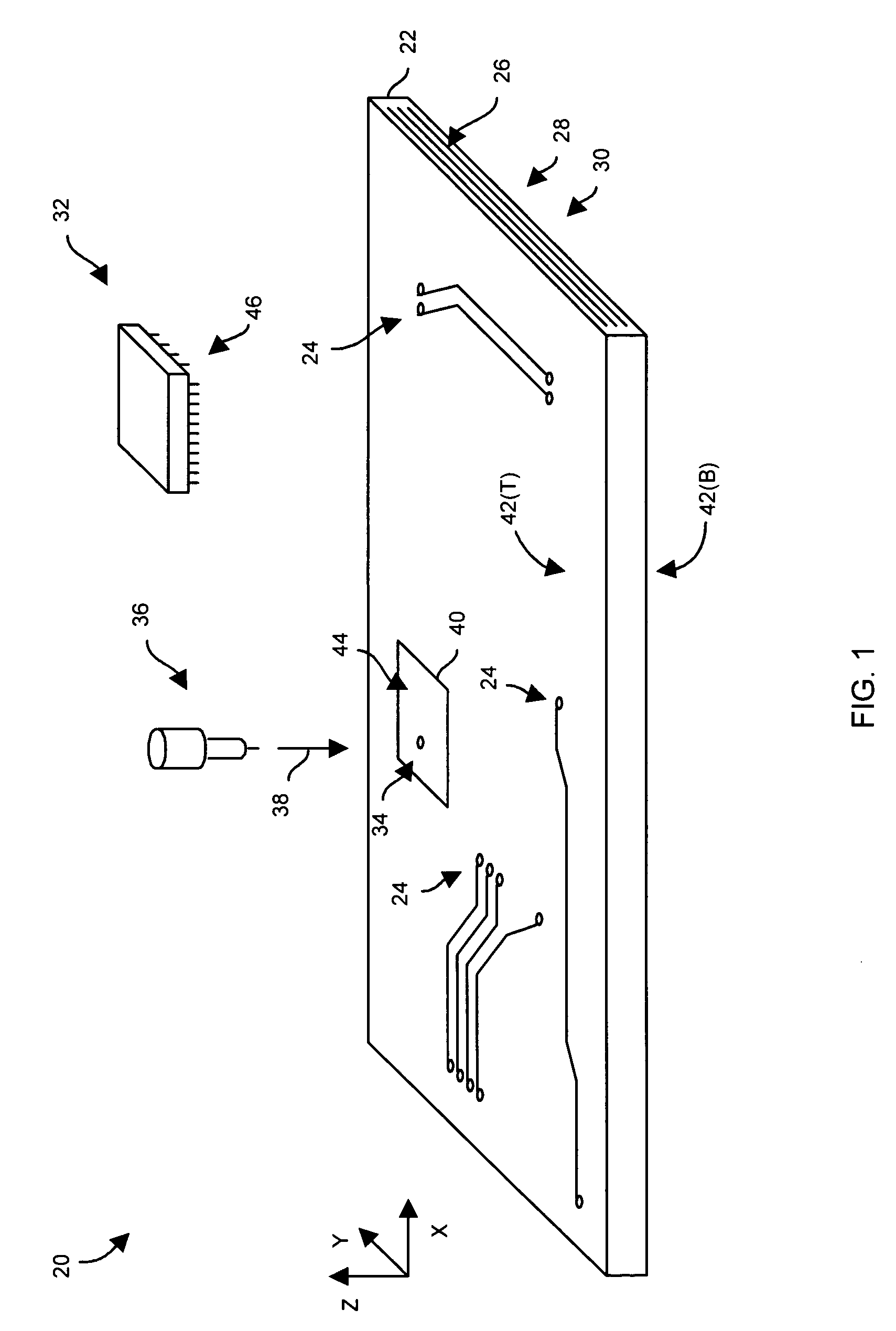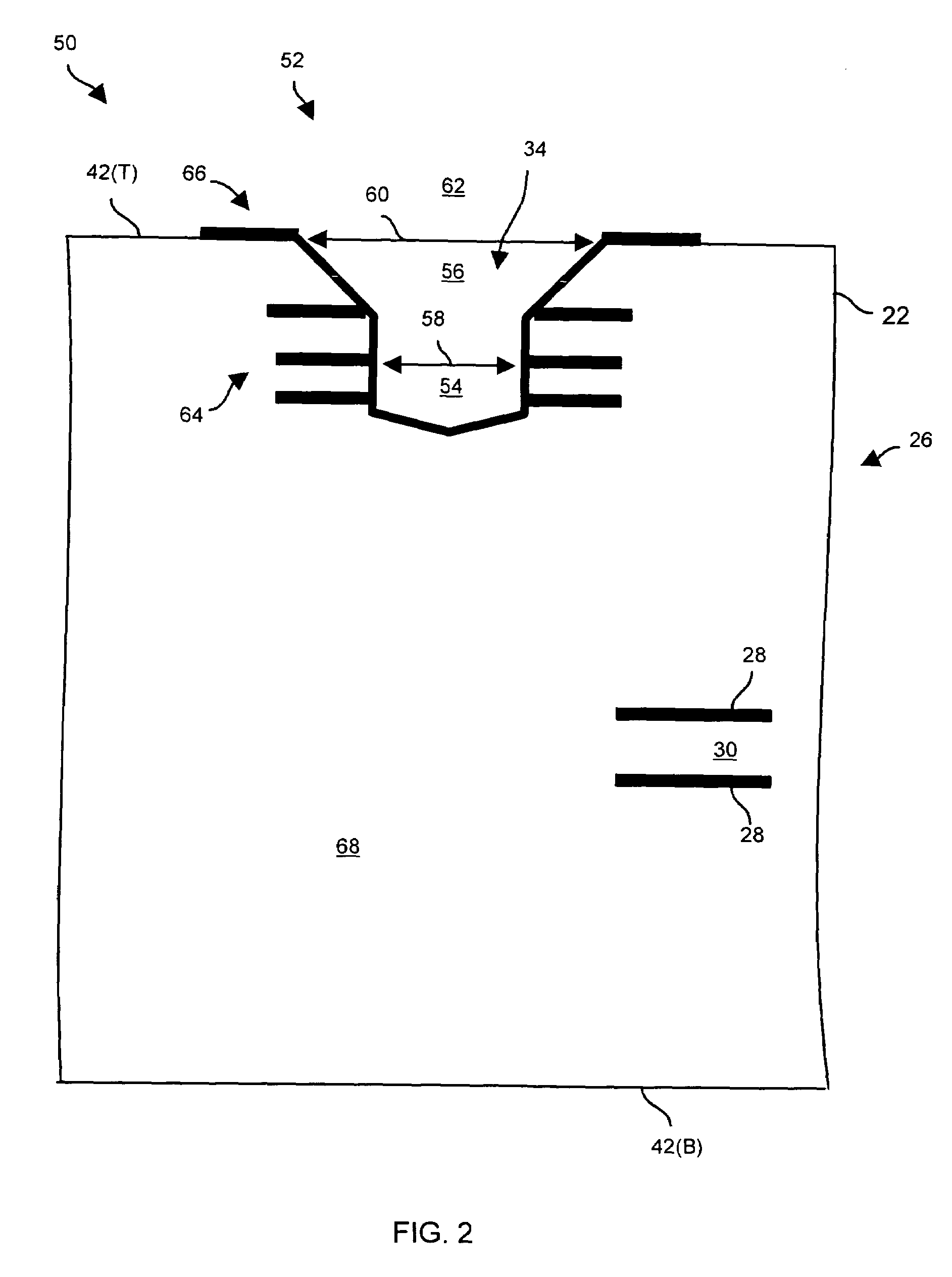Techniques for manufacturing a circuit board having a countersunk via
a technology of countersunk vias and circuit boards, which is applied in the manufacture of printed circuits, printed circuits, printed circuit aspects, etc., can solve the problems of significant increase in costs, difficulty for circuit board manufacturers to achieve connectivity goals using through vias alone, and thicker and more massive circuit boards. achieve the effect of reducing costs, improving access, and high connection density
- Summary
- Abstract
- Description
- Claims
- Application Information
AI Technical Summary
Benefits of technology
Problems solved by technology
Method used
Image
Examples
Embodiment Construction
[0024]Embodiments of the invention are directed to circuit board manufacturing techniques which involve carving a countersunk via hole within circuit board material to form a countersunk via. Such carving is capable of taking place at the same time as the drilling process for creating through vias thus alleviating the need for an additional laminating and pressing process which would otherwise increase costs (e.g., as required when creating conventional blind and buried vias). Furthermore, the countersunk via resulting from such carving is capable of interconnecting several internal signal layers by going deeper into the circuit board material than a conventional blind via without posing a manufacturability or quality threat thus providing greater opportunity to achieve high connection densities and thus perhaps alleviating the need for one or more additional circuit board layers.
[0025]FIG. 1 shows a fabricated circuit board 20 which is suitable for use by the invention. The fabrica...
PUM
| Property | Measurement | Unit |
|---|---|---|
| diameter | aaaaa | aaaaa |
| diameter | aaaaa | aaaaa |
| diameter | aaaaa | aaaaa |
Abstract
Description
Claims
Application Information
 Login to View More
Login to View More - R&D
- Intellectual Property
- Life Sciences
- Materials
- Tech Scout
- Unparalleled Data Quality
- Higher Quality Content
- 60% Fewer Hallucinations
Browse by: Latest US Patents, China's latest patents, Technical Efficacy Thesaurus, Application Domain, Technology Topic, Popular Technical Reports.
© 2025 PatSnap. All rights reserved.Legal|Privacy policy|Modern Slavery Act Transparency Statement|Sitemap|About US| Contact US: help@patsnap.com



